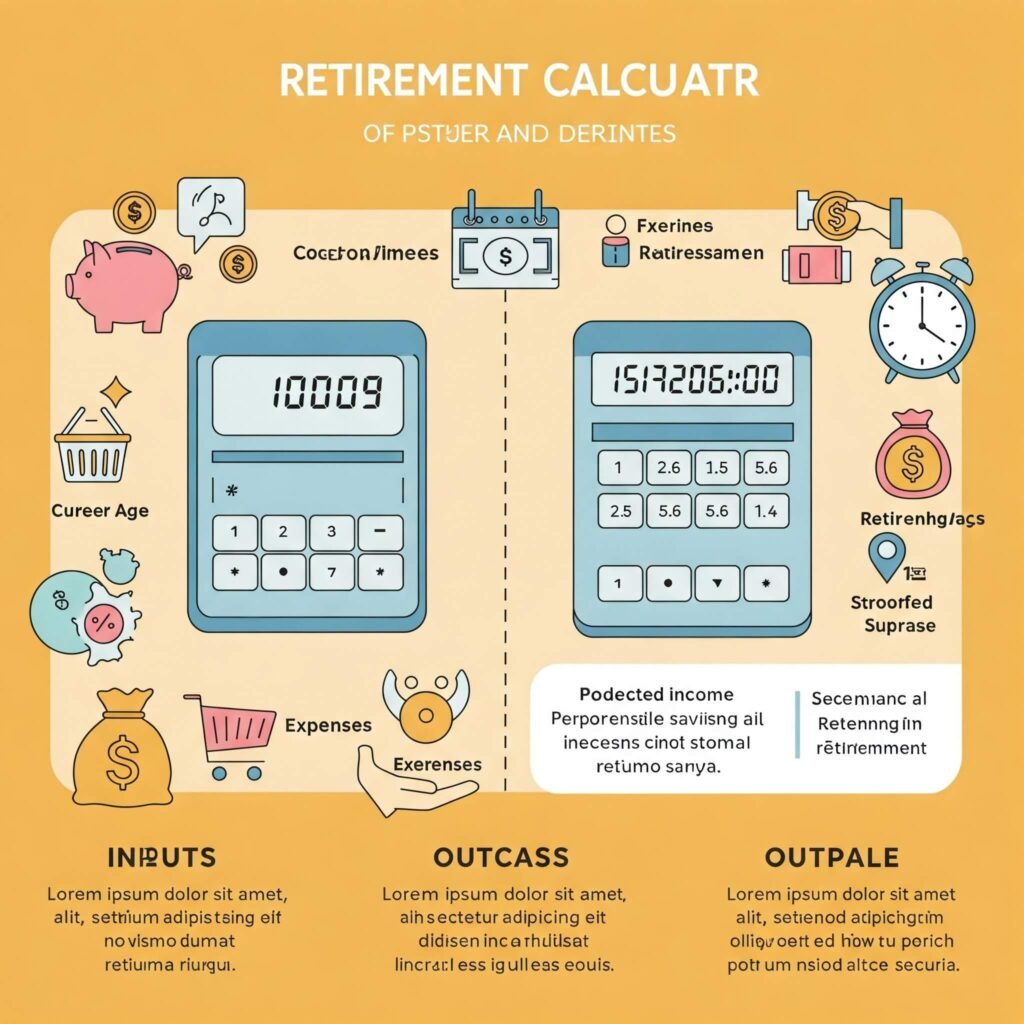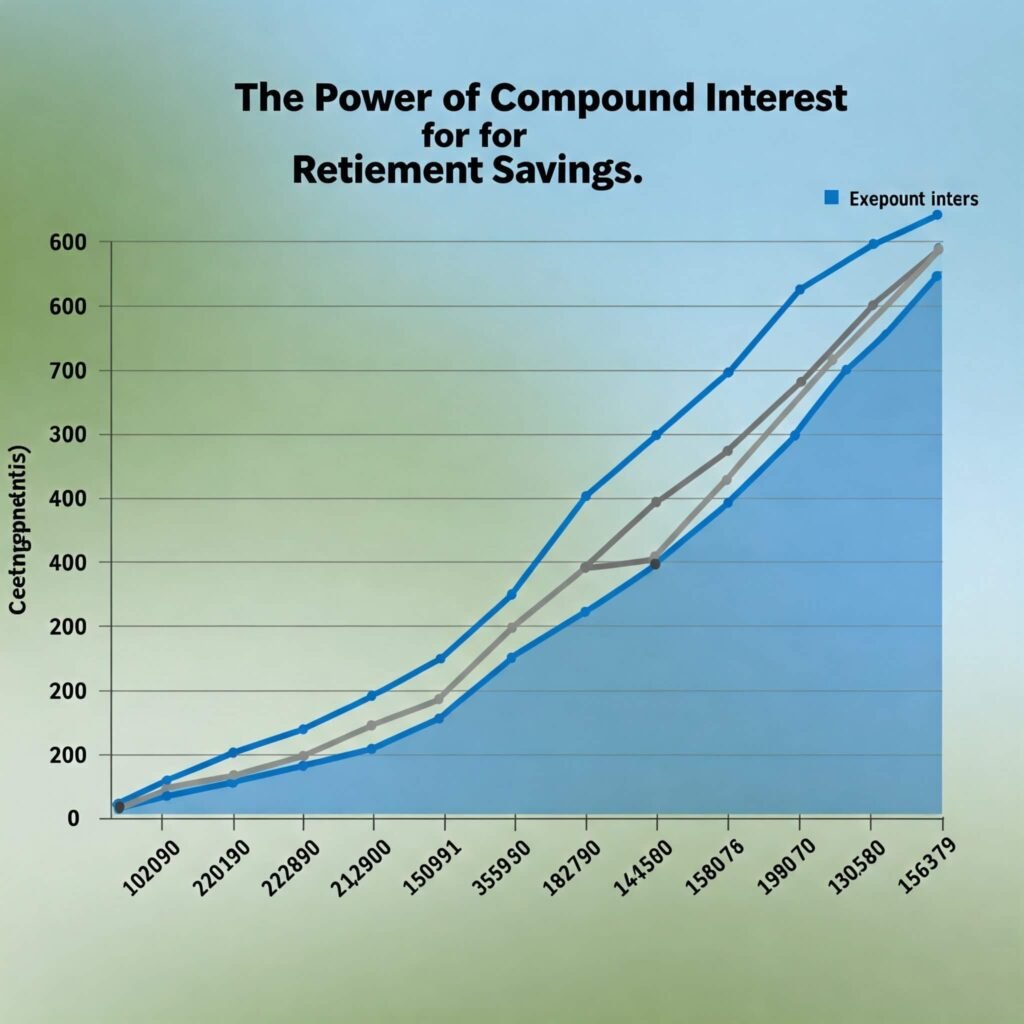
Why a Retirement Calculator is a Game-Changer
A retirement calculator simplifies the complex math of retirement planning. It estimates how much you need to save based on your lifestyle and goals. A 2024 report by the Transamerica Center for Retirement Studies found that 56% of workers don’t know how much they need to retire. A calculator eliminates guesswork, giving you a clear path forward.
The Power of Early Planning
Using a retirement calculator early helps you adjust your savings or spending habits. For example, Emma, a 32-year-old graphic designer, used a calculator and discovered she needed to save $800 more monthly to retire at 60. She cut subscriptions and boosted her savings, putting her dream retirement within reach.
How a Retirement Calculator Works
Retirement calculators estimate the savings required to fund your retirement by analyzing key inputs:
- Current Savings: Balances in 401(k)s, IRAs, or other accounts.
- Annual Expenses: Estimated costs in retirement (housing, healthcare, travel).
- Investment Growth: Expected returns (e.g., 6-7% for a balanced portfolio).
- Retirement Age: When you plan to retire.
- Life Expectancy: How long your savings need to last (e.g., age 90).
Many calculators use the 4% rule, assuming you can withdraw 4% of your savings yearly. For example, $1.5 million in savings supports $60,000/year withdrawals.
Outbound Link: Try a user-friendly retirement calculator at Bankrate.

Step 1: Collect Your Data for the Retirement Calculator
Accurate data is crucial for reliable results. Gather the following:
- Savings: Check balances in retirement accounts and other investments.
- Expenses: Estimate retirement costs, including essentials and luxuries like travel.
- Income Sources: Account for Social Security, pensions, or part-time work.
- Growth Rate: Use a realistic rate (e.g., 6% for stocks and bonds).
For instance, Mark, a 45-year-old teacher, calculated he’d need $45,000/year in retirement. His calculator showed he needed $1.125 million to retire at 65.
Step 2: Pick the Best Retirement Calculator
Different calculators suit different needs. Here are top options:
- Simple Calculators: Quick estimates (e.g., AARP’s retirement calculator).
- Detailed Calculators: Factor in inflation, taxes, and Social Security (e.g., Vanguard’s tool).
- Mobile Apps: Apps like Empower track your progress in real time.
Pro Tip: Run your numbers through multiple calculators to cross-check results.
Outbound Link: Explore detailed calculators at Vanguard.
Step 3: Act on Your Retirement Calculator Results
Your calculator may reveal you’re behind on savings. Here’s how to catch up:
Boost Your Savings
- Maximize Contributions: Contribute the max to your 401(k) or IRA ($23,000 for 401(k) in 2025).
- Automate Transfers: Set up automatic deposits to investment accounts.
- Cut Expenses: Reduce non-essentials like dining out or unused subscriptions.
Increase Income
- Side Gigs: Freelance, consult, or start a small business.
- Career Growth: Seek promotions or higher-paying roles.
For example, Priya, a 39-year-old nurse, added $400/month to her savings by driving for a rideshare app, shortening her retirement timeline by four years.
Step 4: Account for Risks in Retirement Planning
Retirement calculators assume steady growth, but risks can derail your plan. Consider:
- Market Downturns: A crash could shrink your portfolio.
- Healthcare Costs: Unexpected medical bills can be costly.
- Longevity Risk: Living longer than expected may deplete savings.
Mitigate risks by diversifying investments and keeping an emergency fund. For instance, David, a 50-year-old accountant, added bonds to his portfolio to stabilize returns.
Outbound Link: Learn about managing retirement risks at The Motley Fool.

Step 5: Update Your Retirement Calculator Yearly
Your finances evolve, so revisit your calculator annually or after major changes like:
- A salary increase or job change.
- Shifts in expenses or retirement goals.
- Significant market fluctuations.
Sophie, a 41-year-old marketing consultant, recalculated after a raise and found she could retire two years earlier than planned.
Key Takeaways for Using a Retirement Calculator
- Gather Accurate Data: Input precise savings, expenses, and growth rates.
- Choose the Right Tool: Use a calculator that matches your needs.
- Take Action: Increase savings or income to meet your goals.
- Plan for Risks: Diversify and prepare for uncertainties.
- Review Regularly: Update your calculator to stay on track.
A retirement calculator puts your dream life within reach. Spend a few minutes today to plan, and you’ll thank yourself tomorrow!











































